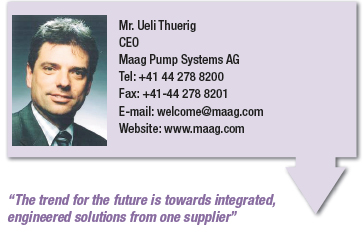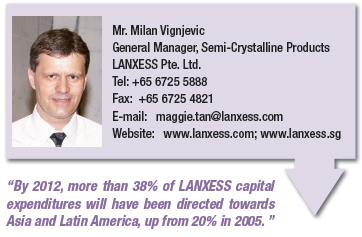Asia entered the global crisis on a strong footing and is continuing to lead the global recovery. The International Monetary Fund (IMF) has revised its Gross Domestic Product (GDP) growth projection for Asia in 2010 to 8%, a one percentage point increase from its Asia Pacific regional report in April. With Asia's strong performance in the first half of this year as compared with other regional economies, it is expected to be well above the trend to grow beyond original projections. For 2011, the IMF forecasts growth in Asia to reach 7%, with emerging Asia expected to grow by 9.5% in 2010 and 8% in 2011. In particular, China, India and Indonesia are seen to lead the region in its recovery. While predictions for economic recovery have been on the bright side, the IMF still stressed on strong economic and policy fundamentals, and the setting up of important trade and financial linkages with advanced economies. Emerging Asia economies are advised to tighten monetary and put necessary fiscal policies in place as capital continues to flood the region. International Plastics News for Asia gathered the insights of leading companies on what they perceive are the major developments that would affect their operations in 2011, and emerging trends in the plastics and rubber industry that they need to focus on as they launch new products and services in the near term.

A faster-than-expected economic recovery of the plastics machinery industry in 2010 created capacity issues in all of our facilities. Similar with other companies, Maag was significantly affected by the global economic crisis forcing us to reduce head count and other costs to reflect decreased demand for our products. Favourable activity levels in 2010 have created challenges in ramping up operations to meet the increased demand. Since our markets, and those of our OEMs were facing intense pricing pressure, we developed and released a discharge gear pump with a sales price 20% lower compared to previous models, and a new line of booster pumps with 20% more output for the same price. The trend for the future is towards integrated, engineered solutions from one supplier with fewer and simpler interfaces between the components. Worldwide after sales support is also a must. Maag's merger with Automatik Plastics Machinery in May 2010 was a response to this trend. The consolidation of the two companies allows us to better serve our customers around the world with value added and completely integrated solutions tailored to local markets. Our key focus for emerging markets is already Asia and Latin America. Those markets are growing fast, and we expect to see particularly high growth in the conversion of plastics into consumer goods and packaging from 2011. New generation of pelletisers with greater reliability at reduced sales price, in addition to a new modular screen changer and gear pumps for highly abrasive materials are also being launched. We plan to invest about $20 - $30 million in new locations and products focused on our key markets.

Assuming that the macroeconomic recovery continues, LANXESS expects significantly higher earnings for 2010 than in the past year or in pre-crisis 2008. We expect to achieve EBITDA pre exceptionals of roughly €800 million, an increase of 80% since 2004 when the company was founded. With this forecast, LANXESS is heading for a year of record profit. Additionally, we are positioning for accelerated growth with a target to achieve EBITDA pre exceptionals of approximately €1.4 billion in 2015. Key factors underlying our profitable growth include a focus on delivering quality products consistently; closely aligning our innovation efforts with customer needs and industry trends; and strengthening our asset base in growth markets such as Asia. By 2012, more than 38% of our capital expenditures w
Sneakers A faster-than-expected economic recovery of the plastics machinery industry in 2010 created capacity issues in all of our facilities. Similar with other companies, Maag was significantly affected by the global economic crisis forcing us to reduce head count and other costs to reflect decreased demand for our products. Favourable activity levels in 2010 have created challenges in ramping up operations to meet the increased demand. Since our markets, and those of our OEMs were facing intense pricing pressure, we developed and released a discharge gear pump with a sales price 20% lower compared to previous models, and a new line of booster pumps with 20% more output for the same price. The trend for the future is towards integrated, engineered solutions from one supplier with fewer and simpler interfaces between the components. Worldwide after sales support is also a must. Maag's merger with Automatik Plastics Machinery in May 2010 was a response to this trend. The consolidation of the two companies allows us to better serve our customers around the world with value added and completely integrated solutions tailored to local markets. Our key focus for emerging markets is already Asia and Latin America. Those markets are growing fast, and we expect to see particularly high growth in the conversion of plastics into consumer goods and packaging from 2011. New generation of pelletisers with greater reliability at reduced sales price, in addition to a new modular screen changer and gear pumps for highly abrasive materials are also being launched. We plan to invest about $20 - $30 million in new locations and products focused on our key markets.
A faster-than-expected economic recovery of the plastics machinery industry in 2010 created capacity issues in all of our facilities. Similar with other companies, Maag was significantly affected by the global economic crisis forcing us to reduce head count and other costs to reflect decreased demand for our products. Favourable activity levels in 2010 have created challenges in ramping up operations to meet the increased demand. Since our markets, and those of our OEMs were facing intense pricing pressure, we developed and released a discharge gear pump with a sales price 20% lower compared to previous models, and a new line of booster pumps with 20% more output for the same price. The trend for the future is towards integrated, engineered solutions from one supplier with fewer and simpler interfaces between the components. Worldwide after sales support is also a must. Maag's merger with Automatik Plastics Machinery in May 2010 was a response to this trend. The consolidation of the two companies allows us to better serve our customers around the world with value added and completely integrated solutions tailored to local markets. Our key focus for emerging markets is already Asia and Latin America. Those markets are growing fast, and we expect to see particularly high growth in the conversion of plastics into consumer goods and packaging from 2011. New generation of pelletisers with greater reliability at reduced sales price, in addition to a new modular screen changer and gear pumps for highly abrasive materials are also being launched. We plan to invest about $20 - $30 million in new locations and products focused on our key markets. Assuming that the macroeconomic recovery continues, LANXESS expects significantly higher earnings for 2010 than in the past year or in pre-crisis 2008. We expect to achieve EBITDA pre exceptionals of roughly €800 million, an increase of 80% since 2004 when the company was founded. With this forecast, LANXESS is heading for a year of record profit. Additionally, we are positioning for accelerated growth with a target to achieve EBITDA pre exceptionals of approximately €1.4 billion in 2015. Key factors underlying our profitable growth include a focus on delivering quality products consistently; closely aligning our innovation efforts with customer needs and industry trends; and strengthening our asset base in growth markets such as Asia. By 2012, more than 38% of our capital expenditures wSneakers
Assuming that the macroeconomic recovery continues, LANXESS expects significantly higher earnings for 2010 than in the past year or in pre-crisis 2008. We expect to achieve EBITDA pre exceptionals of roughly €800 million, an increase of 80% since 2004 when the company was founded. With this forecast, LANXESS is heading for a year of record profit. Additionally, we are positioning for accelerated growth with a target to achieve EBITDA pre exceptionals of approximately €1.4 billion in 2015. Key factors underlying our profitable growth include a focus on delivering quality products consistently; closely aligning our innovation efforts with customer needs and industry trends; and strengthening our asset base in growth markets such as Asia. By 2012, more than 38% of our capital expenditures wSneakers
 iConnectHub
iConnectHub
 Login/Register
Login/Register Supplier Login
Supplier Login


























